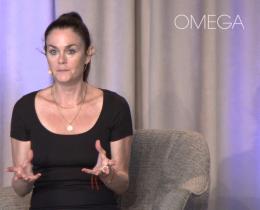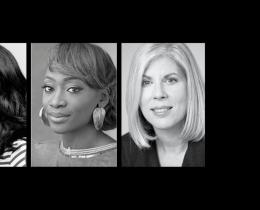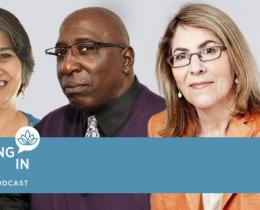Mary Magdalene’s gospel starts with missing pages. These are the words we can’t get back. This is the wisdom, the voice of Christ from the heart of a woman, that was torn out and most likely destroyed before the rest of her gospel was buried. There was something so incendiary in these first six pages that her gospel starts on page seven.
And there’s something poetic about that, since according to Mary’s gospel, seven is the number of stages we need to go through, or powers we need to confront within ourselves, to reach a clarity or singularity of heart that lets us see past the ego of our own little lives to what’s more real, and lasting, and infinite, and already here, within us.
Three copies of the Gospel of Mary have been recovered—two in Greek and one in Coptic.
The Missing Answers in the Gospel of Mary Magdalene
All three versions of her gospel are missing the beginning, and then also, four pages in the middle. And those four pages would have contained the answer to what I believe is one of the most significant questions we could ever know.
Mary asks Christ, “So, now, Lord, does a person who sees a vision see it with the soul or with the spirit?”
All we have of his answer is this provocative yet cryptic start:
“The Savior answered, ‘A person does not see with the soul or with the spirit. Rather the mind, which exists between the two, sees the vision and that is what . . .”
“Mind,” here, isn’t the modern, dualistic concept of the mind that we think of today. It’s not mind devoid of body. It’s a word that’s hard to translate from the Greek. It’s actually best to keep it in Greek, although the first time I came across it, I thought it was in French.
It’s nous. Nous in French means we. Nous in Greek means the eye of the heart. It’s the vision, or perception of the soul.
How we see anything changes everything. And there’s so much at stake here, which is why her question to Christ is still ours to answer.
And which is why perhaps the answer to her brilliant question was torn from her gospel in the first place. Because it would have revealed to us how we perceive the divine directly, from within.
What’s at stake is spiritual authority. And what I mean by that is both the struggle to determine who has the power to tell Mary Magdalene’s story and, subsequently, the authority to tell the truth about our own story.
If how we see—truly see—is not with eyesight, but with a vision, a form of spiritual perception that allows us to know what’s real, what’s lasting, what’s actually true, if this comes from within us, then no one has power over us.
Simple, right?
Yes. And, simply revolutionary.
For me, these seven powers in Mary’s gospel serve as the template of what it means to be human. It’s like being handed a road map for the inner terrain. Here are the places as human beings we get stuck. These are the climates, the states of mind that can compel us to act in ways that are not indicative of who we really are. These are the powers that can silence us from within.
The Gospel of Mary helped me understand why I’ve never felt at home in a Christianity that excluded it.
From a theological perspective, Mary Magdalene’s gospel is considered an “ascent narrative,” which means that it describes a path that we can navigate to liberate the soul; not in death, but here in this lifetime.
The word ascent, though, is misleading in that the imagination immediately goes upward. Thinks transcendence. Ascension according to the Gospel of Mary is more accurately a descent into the heart; so farther up is actually further in.
Finding Mary Magdalene’s Voice
For me, finding Mary Magdalene’s voice meant recovering my own. This is why I’ve spent the majority of my life studying her gospel and following her legend through history.
The point of Mary’s gospel is not to suggest that we need to become someone else, someone “better.” There isn’t this om-vibrating version of yourself that you figure out how to be, or that I’ve become by living it.
It’s about acquiring a vision that allows us to see what has always been here, within us. It’s about the quality and intensity of our existence. It’s about the possibility of actually being present, instead of being caught without even realizing it in the endless stories the ego tells from the second we wake up, dividing us from what’s already right here, dividing us from each other and ourselves, dividing us from what we consider good, or god.
It’s about really waking up to the fact that our system of understanding the world is no longer serving us.
And that way does not include finding some hot, saucy pants lover, who completes me (not so far anyway), or the discovery of a tried and true recipe for uninterrupted joy. Not fame. Not success. There’s no end point here, no fixed state of completion. There’s no master or guru status. It’s just alpha, then omega, ad infinitum. This is what I’m trying to explain. There is no X marks the spot.
It’s simpler than that—and far more difficult.
It’s more of a series of perpetual moments when you remember that you don’t have to feel separate from love—if you don’t want to.
Even in the midst of the worst of what we say to ourselves, even when someone we love most in the world can’t see us at all, we can practice a way that humbles us, that disrupts the ego’s grasp, and lets us return again, with ease (even eventually, with levity), to love.
It’s all very quiet and unremarkable, though. It’s not showy, or exciting. It’s more like this, from Elizabeth Gilbert: “Never forget that once upon a time, in an unguarded moment, you recognized yourself as your friend.”
And in that moment of recognition, this is when we save ourselves, from the self that was never real to begin with. This is when we see with the eye of the heart.




